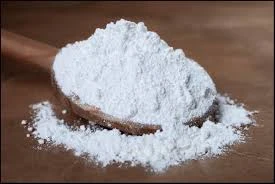
Understanding the Benefits and Uses of Compound Fertilizers for Optimal Plant Growth
Understanding Compound Fertilizers Boosting Plant Growth with Balanced Nutrition
Compound fertilizers have emerged as a vital component in modern agriculture, playing a pivotal role in enhancing crop yield and quality. These fertilizers are formulated to provide a balanced nutritional profile, ensuring that plants receive the essential nutrients they need for optimal growth. In this article, we will explore what compound fertilizers are, their composition, benefits, and best practices for their application.
What Are Compound Fertilizers?
Unlike single nutrient fertilizers, which provide only one essential nutrient, compound fertilizers are premixed fertilizers that contain two or more primary nutrients. The three primary macronutrients critical for plant growth are nitrogen (N), phosphorus (P), and potassium (K), commonly referred to as NPK. These nutrients play unique roles nitrogen promotes vegetative growth, phosphorus is essential for root development and flowering, and potassium enhances overall plant health and stress resistance.
Compound fertilizers come in various forms, including granules, pellets, and liquids, making them convenient for different types of applications. They can be tailored to meet specific crop needs and soil conditions, effectively boosting productivity in both conventional and organic farming.
Composition and Types of Compound Fertilizers
Compound fertilizers can be classified based on their nutrient composition. For instance, a fertilizer labeled as 10-20-10 indicates that it contains 10% nitrogen, 20% phosphorus, and 10% potassium. Other common ratios include 15-15-15 and 8-24-8, each serving distinct purposes depending on the crop's requirements.
Furthermore, compound fertilizers can also be categorized into
1. NPK Fertilizers These contain a balanced ratio of nitrogen, phosphorus, and potassium, suitable for a wide range of crops. 2. NPK Blends Custom formulations designed for specific crops or conditions, such as high-nitrogen blends for leafy vegetables or high-phosphorus blends for root crops. 3. Controlled-release Fertilizers These are designed to release nutrients slowly over time, reducing the risk of leaching and ensuring that plants receive a steady supply of nutrients.
Benefits of Using Compound Fertilizers
1. Balanced Nutrition One of the most significant advantages of compound fertilizers is their ability to provide a balanced nutrient supply, meeting the complexity of plant nutritional needs throughout different growth stages.
compound fertilizer

2. Improved Crop Yield By supplying essential nutrients in the right proportions, compound fertilizers can significantly increase crop yields and enhance the quality of the produce. This is particularly important for farmers aiming to feed a growing global population.
3. Soil Health Many modern compound fertilizers contain micronutrients and organic additives that help improve soil structure, promote beneficial microbial activity, and enhance overall soil health.
4. Efficiency With compound fertilizers, farmers can apply one product instead of multiple individual fertilizers, saving time and labor costs. This efficiency also helps reduce the risk of nutrient imbalances in the soil.
Best Practices for Application
To maximize the benefits of compound fertilizers, certain best practices should be adopted
1. Soil Testing Conducting a soil test before applying fertilizers is essential. It helps in understanding nutrient deficiencies and pH levels, allowing for precise formulation of nutrient needs.
2. Application Timing Timing the application of compound fertilizers is crucial. Applying them at the right growth stages ensures that nutrients are available when the plants need them the most.
3. Proper Dosage Adhering to recommended application rates is vital to avoid over-fertilization, which can lead to nutrient runoff, environmental pollution, and damage to crops.
4. Incorporation For granular compound fertilizers, incorporating them into the soil rather than applying them on the surface can improve nutrient retention and reduce volatilization losses.
Conclusion
Compound fertilizers are indispensable tools in modern agriculture, providing an effective means of ensuring that plants receive the nutrients they require to thrive. By understanding their composition, benefits, and optimal application practices, farmers can harness the power of compound fertilizers to achieve sustainable agricultural success and contribute to global food security. As agriculture continues to evolve, the use of balanced fertilization strategies will remain a cornerstone of productive farming practices.
-
Pure Sodium Dichloroisocyanurate Dihydrate | Powerful DisinfectantNewsAug.29,2025
-
Industrial Chemicals: Quality & Purity for Every IndustryNewsAug.28,2025
-
Nitrile Rubber Honoring Strict Production StandardsNewsAug.22,2025
-
Aspartame Ingredients Honoring Food Safety ValuesNewsAug.22,2025
-
Fertilizer for Balanced Plant NutritionNewsAug.22,2025
-
Cyanide Gold Processing with High Purity AdditivesNewsAug.22,2025
-
Formic Acid in Textile Dyeing ApplicationsNewsAug.22,2025
Hebei Tenger Chemical Technology Co., Ltd. focuses on the chemical industry and is committed to the export service of chemical raw materials.
-

view more DiethanolisopropanolamineIn the ever-growing field of chemical solutions, diethanolisopropanolamine (DEIPA) stands out as a versatile and important compound. Due to its unique chemical structure and properties, DEIPA is of interest to various industries including construction, personal care, and agriculture. -

view more TriisopropanolamineTriisopropanolamine (TIPA) alkanol amine substance, is a kind of alcohol amine compound with amino and alcohol hydroxyl, and because of its molecules contains both amino and hydroxyl. -

view more Tetramethyl Thiuram DisulfideTetramethyl thiuram disulfide, also known as TMTD, is a white to light-yellow powder with a distinct sulfur-like odor. It is soluble in organic solvents such as benzene, acetone, and ethyl acetate, making it highly versatile for use in different formulations. TMTD is known for its excellent vulcanization acceleration properties, which makes it a key ingredient in the production of rubber products. Additionally, it acts as an effective fungicide and bactericide, making it valuable in agricultural applications. Its high purity and stability ensure consistent performance, making it a preferred choice for manufacturers across various industries.





